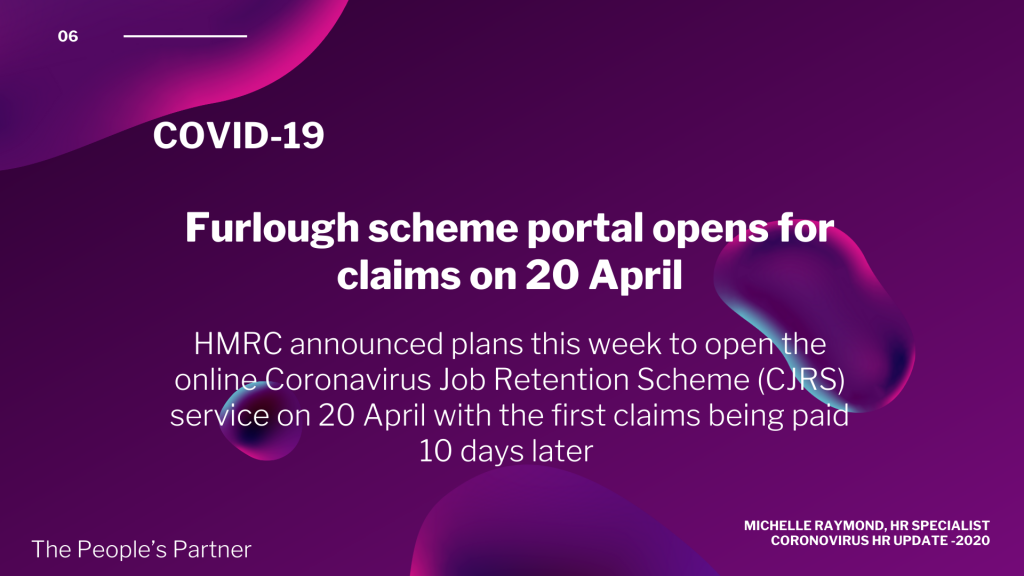
FURLOUGH SCHEME PORTAL OPENS FOR CLAIMS ON 20 APRIL 2020
Since the scheme was announced on 20 March, many business owners have been concerned whether the HMRC will pay CJRS grants soon enough to save cash-starved businesses before it is too late.
On 8th April, HMRC chief executive Jim Harra told the Treasury select committee the CJRS will be ready to go a week on Monday. His announcement was accompanied by an HMRC note to tax agents setting out further details:
- The scheme is due to go live on 20 April with first payments being made 10 days later
- Future claims will be paid within four to six days
- The online CJRS service is now undergoing beta testing with a group of selected employers
- Applicants will access the system using their current government gateway login
- Further guidance will be issued by HMRC this week (week commencing 13 April) explaining on how to use the system
- Following the initial backdated claims, claims can be made no more than 14 days before payrolls are run but will be accepted for the different pay periods
- Tax agents who are authorised to act for PAYE matters will be able to file claims on behalf of their clients
To make a claim, you need to meet three conditions:
- You need to have created and set up a PAYE scheme before 19 March 2020 (deadline extended)
- You need a UK bank account, into which the money will be paid
- You MUST have enrolled for PAYE online.
The last condition is very important. If you registered for PAYE as an employer, but didn’t do it online, you need to enrol online before you can receive CJRS payments.
This facility opens on 20 April. The funding is initially available in respect of furlough which takes place during the period from 1 March and 24 May 2020 (i.e. 12 weeks), but that the scheme may be extended after this date. At the time of writing, the scheme has not been extended and therefore employee should seek immediate advice on the required actions and timescales for making redundancies.
Information required by HMRC
HMRC is putting together a support pack and further guidance due out this week on how to compile and upload claims, because they say if a million employers try to ring us all on the same day, it will not be possible to provide enough resources to handle all of those calls at the same time. At the moment the details of what is needed to make a claim are as follows:
- your employer PAYE reference number
- the number of employees being furloughed
- National Insurance numbers for the employees you want to furlough
- Names of the employees you want to furlough
- Payroll/works number for the employees you want to furlough
- your Self-Assessment Unique Taxpayer Reference or Corporation Tax Unique Taxpayer Reference or Company Registration Number
- the claim period (start and end date)
- amount claimed (per the minimum length of furloughing of 3 consecutive weeks)
- your bank account number and sort code
- your contact name
- your phone number
You will need to calculate the amount you are claiming. HMRC will retain the right to retrospectively audit all aspects of your claim.
If you have fewer than 100 furloughed staff you will be asked to enter details of each employee you are claiming for directly into the system – this will include their name, National Insurance number, claim period and claim amount, and payroll/employee number (the last item is optional).
If you have 100 or more furloughed staff you will be asked to upload a file with the information rather than input it directly into the system.
Hope this enough information to get you prepared for Monday! and please pass this on to your accounts department so they are fully informed.
We recommend that you seek advice from a suitably qualified financial adviser before taking any financial action. The information in this newsletter only serves as a guide and no responsibility for loss occasioned by any person acting or refraining from action as a result of this material can be accepted by the authors or The People’s Partner
Michelle CJRS, Corona, COVID-19
